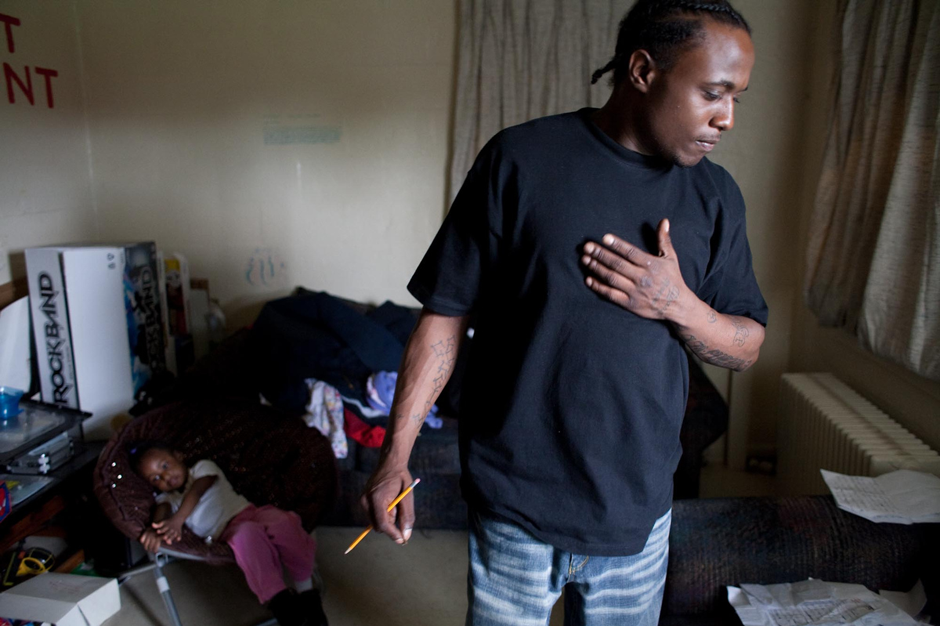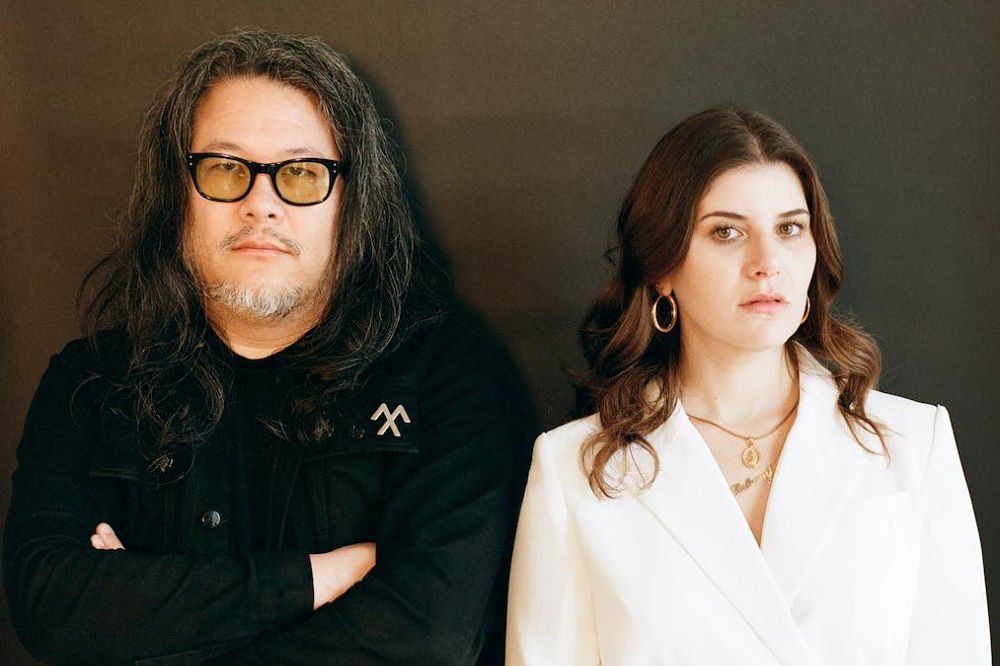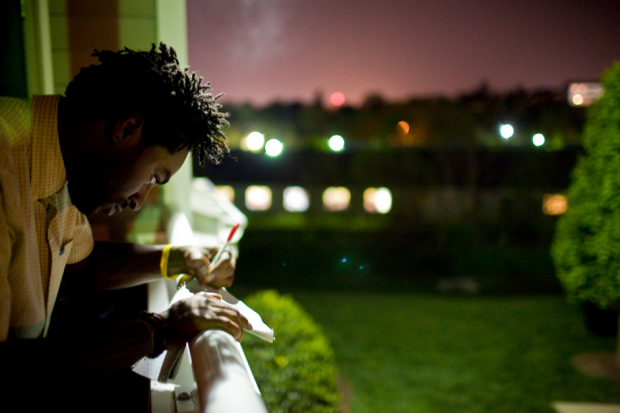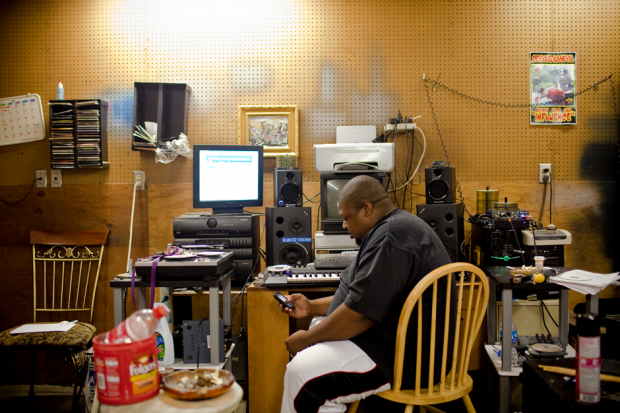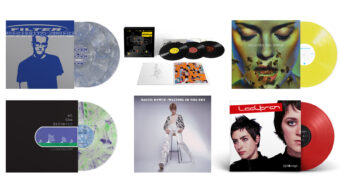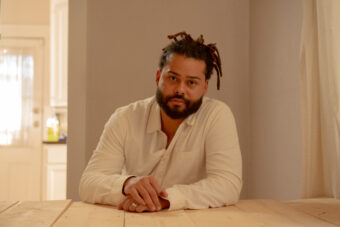While I was reading “Hip-Hop Culture In Small Town America,” the recent New York Times piece on Roanoke, Virginia, photographer Jared Soares, I also happened to be listening to NPR’s Fresh Air With Terry Gross. The guest that day was Aziz Ansari and Gross seemed amazed that the self-deprecating comedian could hang out with guys like Jay-Z and Kanye West. Ansari, who stressed these megastars’ humanity, played along, as well. He joked, “There’s just not a self-deprecating rapper; that wouldn’t work. If you’re a rapper and you’re like, ‘I saw this girl, but I was too scared’ — that doesn’t work.”
Gross’ blanket assumptions about rappers (or her audience’s idea of “rappers”) stuck in my craw because I was staring at Soares’ gentle, thoughtful photos of rappers a world removed from the stereotypes that even well-meaning, public-radio hosts internalize. His work presents hip-hop separate from ego-driven characterization. It focuses on creative guys in messy basements and converted garages making music. Last week, I spoke to Soares about whether “DIY” applies to Roanoke rap, how to carefully enter a local hip-hop scene, and the importance of family to these scrappy rappers. His show, “Small Town Hip-Hop in Virginia” will be part of the Charlottesville, Virginia’s Look3 photo festival in June.
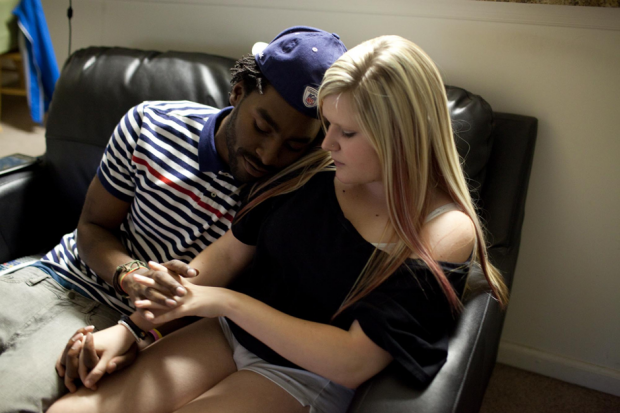
I enjoy describing independent/underground hip-hop as “DIY” because people don’t usually associate that word with rap music. Your photos remind me of something like Henry Rollins’ Get In The Van.
These guys would never say “DIY,” but it’s sort of the same feeling, the same attitude. For some of the guys, it’s definitely a grind. They’re working a day job or they’re working odd jobs to support themselves and support their families. You know, with the ultimate goal of their music supporting everybody, one day. There’s a few guys that are on government assistance, and then there’s a guy like Poe Mack who’s actually, you know, able to support himself with his music. There’s a huge sliding scale of how these guys do it.
When you started the project, were you trying to subvert a lot of the typical hip-hop imagery we usually get to see?
I just wanted to do a project about hip-hop in Roanoke. I wanted see if it was out there. From there, I wanted to get to know the back story of the people making music, what motivates them, and what their life is like, in general. There wasn’t really a positive or a negative bend to it. I just wanted to show it for what it was, or what it is, in an honest way.
How did you get involved in the Roanoke hip-hop scene?
I would go to corner stores to buy mixtapes and each mixtape would have a phone number on it. So, I just started to call those phone numbers and if I got somebody on the phone, I would give them my pitch of what it was I wanted to do and what it was I was interested in. You know, the whole breakdown of the project.
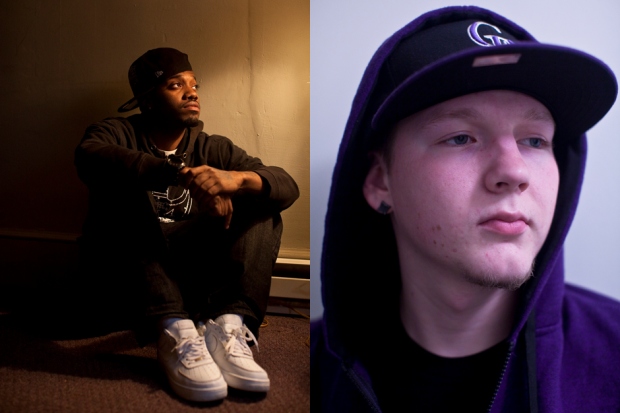
Did cold calling them like that actually work?
Some of the numbers were disconnected. One number, I think, just played music of the rapper? But one phone number was to a graphic-design guy. His name’s Terrence Palmer. And right off the bat, I told Terence what I was interested in doing. He told me he didn’t like talking on the phone, but if I wanted to come down to his studio, we could talk about it in person. So, I got directions to his studio and hung up the phone and went over, and basically gave him my pitch in person.
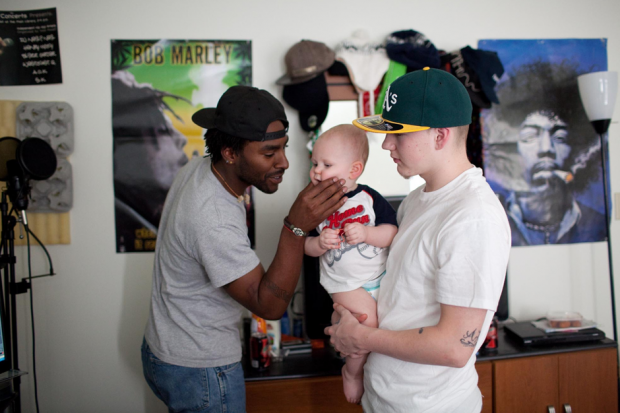
Were you surprised that he was suspicious?
As a working photographer, I always expect some push back from people. So, I’m usually ready for when somebody’s like, “I don’t know about this.” And I think right off the bat, somebody who’s not from their part of town is automatically suspicious. Like, “What’s the endgame? What’s the catch? Are you trying to make us out to be a bunch of thugs? Is this like some damaging report on us that you’re going to do?” All those types of questions. I just told him that I’m here to learn and I wanted to document and show what things actually looked like. To give this set of people a voice in my photographs. And he was like, “Okay, that’s cool. Let me make some phone calls.”
How long did it take for them to let you into their world?
For maybe, like, three weeks, I would come back periodically after our first meeting and talk some more about music and just get to know Terrence. And he would bring in people to his studio when he knew I was coming by, and we would just talk. And then, after that, he invited me to what ended up being a calendar shoot? I had no idea. They told me it was a “business shoot,” but it turned out to be this calendar shoot with these like, scantily clad women. So, that was actually the first thing I shot for this project: Like, women posing on a pool table.
You passed the test, I guess.
Right. It kind of snowballed. I met this guy Oxygen Elements. I met this guy named Palmz who also worked with Terrence. Everybody’s kind of connected because Roanoke’s a fairly small place. So, through Terrence, I was meeting all these guys and they’d mention that they were recording on Thursday night and I’d ask if it was cool to come by, and then that’s kind of how it would happen. A level of trust came about after awhile. And I would show the guys some of the photos, so they would know what I was doing.
There’s a very clear sense of the importance of family and community in the photos. Was that something you sought out?
It just kind of happened organically. I just started to notice these patterns. Oxygen Elements would bring his daughter on occasion to the studio, and I have these other photos of her walking around and he’s just got stacks and stacks of lyrics on notebook paper. And then I would see his brother Marcus, who would bring his kids to shows. I began to see these guys as family. It was like another theme, this idea of family among your fellow artists, in addition to your kids, your wife, your girlfriend, mom, dad…
Your photos communicate this idea that rappers are just regular people. It really shouldn’t be this way, but that still seems to be a surprise to a lot of people.
Even though we may have had different life experiences, I discovered how much I have in common with these guys. As artists, we can relate through the creative process and refining a craft and figuring out ways to break through. And these are conversations I’ve had with Poe Mack, and Oxygen Elements, and when I was in Raleigh for a few days, King Mez, We’d have conversations about creatively going forward. Over time, I realized that what they do as rappers is a lot like what I do as a photographer. I was always able to connect with this idea of trying to make it or trying to get to the next level. The whole notion of grinding. I connect with that.

